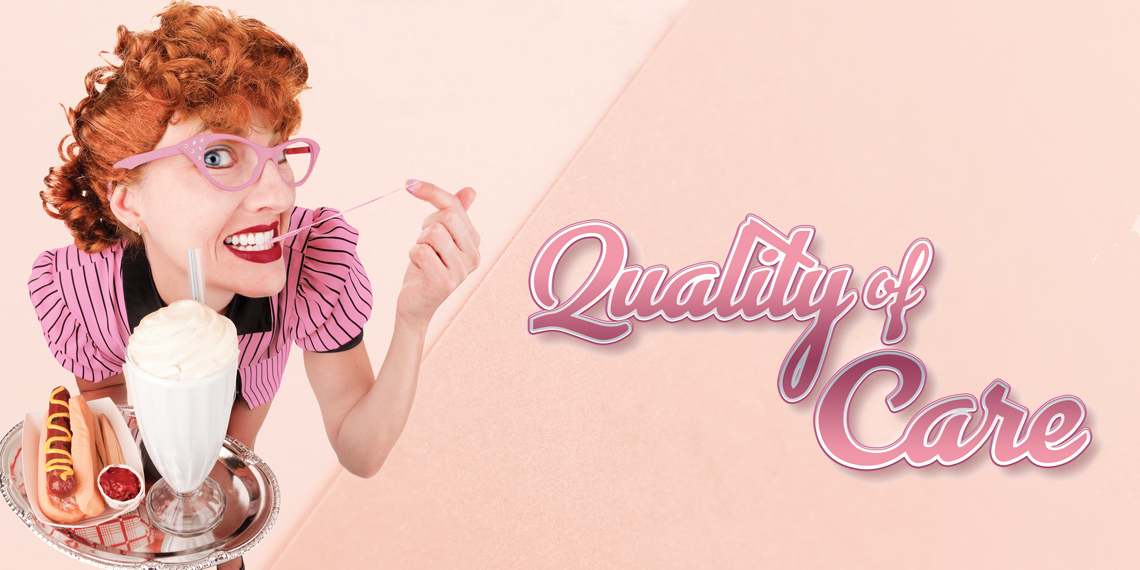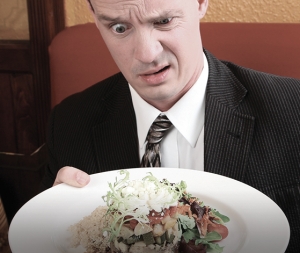
Running a great restaurant isn’t about being a great chef. While it certainly helps to know how to cook, that knowledge is only ever going to get you so far. There are many more elements that go into being able to be a success in the culinary world. As a customer, however, it’s easy to see the three different areas that you (as a customer) are going to really care about – the areas of presentation, service, and quality.
Presentation
Presentation is the first thing that is going to be recognized. It’s when you walk in and get your first look at the place. Does it have knick-knacks all over the walls? Music memorabilia? Or are the walls plain and drab, and have a few places where the wallpaper is peeling off? First impressions matter, and it instantly sets the tone of the conversation. If the restaurant decor needs updating, what kind of message does that send to someone walking in the door? It probably tells them that they shouldn’t set their standards too high when it comes to their meal.
This pre-judgement happens in the optical world as well. As soon as someone comes in, how your office looks is going to immediately set their expectations and assumptions about how good you are. Even if the two have no bearing on each other at all, it’s what people do. We both know that the patient is going to have the exact same eye exam, regardless of whether or not the exam chair smells musty and has a few duct-tape patches on the seat. From their perspective, however, that kind of thing is going to make for a worse exam, even if there’s no substantive change in their care.
Service
Service, in restaurant terms, is pretty easy to quantify. At the end, if you get good service, you leave an appropriate amount for a tip. If they screw up, and you aren’t happy, you don’t leave a tip. If they’re really, really bad, you make sure to scrounge around for a few pennies to leave, so that way there’s no possible way for them to assume that you just ‘forgot’ to leave a tip. Regardless of your level of passive-aggressive hostility, however, you hopefully get the point about what I’m lumping in under ‘service’. However good your actual food is, however, is going to end up on a completely different category. We find it very easy to rate a restaurant separately on the areas of how the service was, and also on how the food was. I’ve been to plenty of places where they make great food, but the service is always abysmal. I’ve also been to places where the service was great, but it was obviously the head chef’s day off.
When we look are service, it isn’t just an individual effort - it takes a team to ensure that the customer’s experience stays positive. It also means that you’re only as strong as your weakest link. If a customer interacts with three people while at your store, and two were positive and helpful, but one was negative or difficult, which person do you think that the customer is going to remember? It’s like going to a restaurant and getting a really surly host that shows you to a table. Even though your interaction with them only lasts a minute or two, it sours the rest of your dining experience, regardless of how good the rest of the meal ends up being. This can easily translate into an office environment. Your customer could receive excellent service while they are actually getting their exam or selecting eyewear - but how was their greeting? Did you set yourself up for success, or a problem? If you’re running behind, do you tell the customer that you’re running late and that it could be another 15 minutes? Or do you just make them wait until you’re ready for them, leaving them the awkward decision of figuring out how long past their appointment time is reasonable before asking how much longer it’s going to be? Most restaurants will at least tell you that a table is “about a 20 minute wait”. I’ve never been to one where it was a “go sit in the waiting area and we’ll let you know when we are ready”. Those little things are the kinds of things that people remember. So we want to remove as many of those little inconveniences as possible.
Quality
This is where we actually look at how the product that is produced (whether it’s a hamburger or eyewear) meets the value expectations of the customer. While it’s easy to say that quality should be “as good as possible”, that isn’t really a helpful way to describe it. Rather, the quality that is delivered should be commensurate with what the customer thinks they should get.
With hamburgers, this expectation is usually set by where the customer chooses to go. Based on the establishment itself, the customer is going to go in with a different mentality of what constitutes ‘acceptable’ quality. If they go into a fast food place, they have a certain expectation of what they are going to get - besides indigestion. They know that what they are going to get isn’t the best burger in the world, but they are okay with that. As long as they get what they expect, they are happy with their experience. They made a decision to go for the fast food, whether it was due to time, cost, convenience, or something else. Similarly, if they go to a more upscale restaurant and get the exact same quality fast food burger, the customer is going to be pretty upset. Even if they would have been perfectly happy with that burger from the other place. Quality, in a sense, isn’t just about putting a frozen-then-microwaved burger next to a fresh-cooked burger, it’s about making sure the level of quality that you deliver meets what the customer wants. Issues usually arise when the customer pays for one level of quality, and gets another.
Many opticals carry different frames at different price points. That’s where can go through the process of determining what quality level the customer is looking for. Usually, that’s based on what they are willing to spend. The problem with quality in eyewear, however, is that the customer really doesn’t know how to tell good from bad. Most people in the business don’t know, either. It’s nowhere near as easy as telling a good burger from a bad burger – with those it’s fairly easy to tell how good it is after tasting it. With lenses and frames, usually you don’t know until later. Either they have problems seeing, the frames break, lenses scratch, or whatever. All manner of problems that can manifest later in their life. The problem here is that time gap between the purchase of the cheaper product and the failures. As a professional, it’s up to you to be able to teach your customer  about eyewear quality so they can make an informed decision about what you’re selling. Especially when it’s so easy for them to get a pair of eyewear online, you need to be able to tell them why your product is the hand-made, freshly cooked burger, and the online pair is the fast food option. Being able to explain that difference is what will help you against losing to online sales.
about eyewear quality so they can make an informed decision about what you’re selling. Especially when it’s so easy for them to get a pair of eyewear online, you need to be able to tell them why your product is the hand-made, freshly cooked burger, and the online pair is the fast food option. Being able to explain that difference is what will help you against losing to online sales.
Overall, presentation and service are going to be your strong points of what gets your customers coming back. It’s something that an online retailer can’t compete with, and what allows you to set yourself apart and be memorable. I’m not saying that having a quality product isn’t important - I’m just saying that it isn’t as important as the other areas. Your competition can always improve their product, so you need to assume that them being “junk” won’t last forever. By taking tips from the restaurant industry and focusing on the service and customer experience, you can make your own practice stand out and be the preferred place for people to keep coming back to.
-Flo, Vera and Alice
